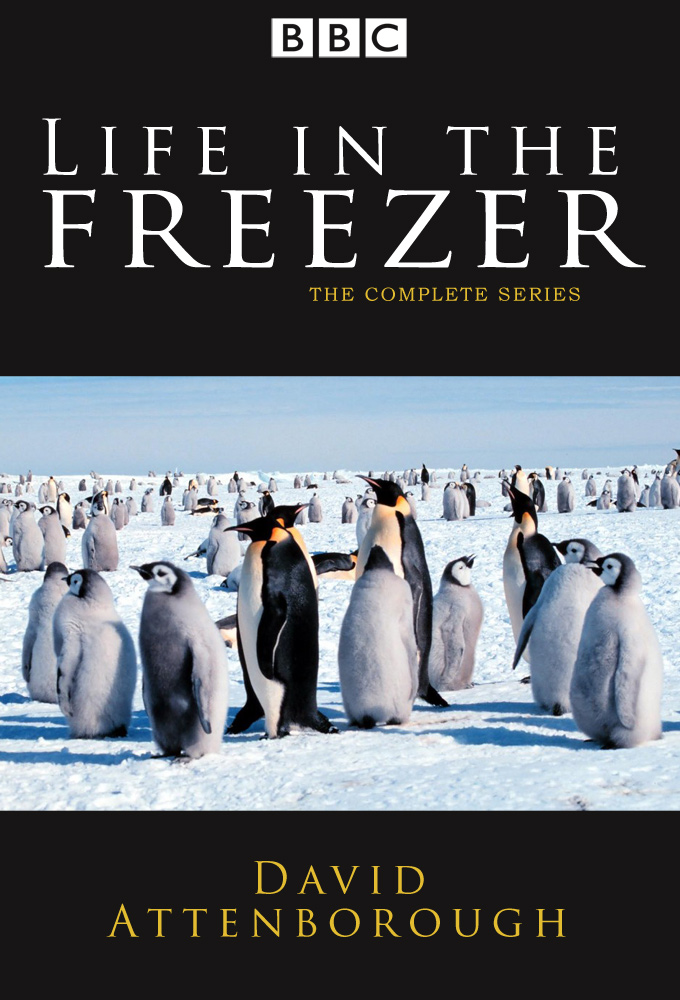Antarktis er det barskeste, koldeste og mest isolerede kontinent på Jorden. Det er dækket og omgivet af 90% af al is i verden, og dets arel på 14 mio. kvadratkilometer fordobles hvert år, når havet fryser til. Gennemsnitstemperaturen ved selve Sydpolen er -49 grader, og den falder til under -70 grader midt om vinteren. Alligevel er dette ugæstfrie landskab hjemsted for overraskende mange dyre- og plantearter, hvoraf mange kun findes i denne region.
David Attenborough og hans filmhold på 20 mand tilbragte tre år på Antarktis, hvor de trodsede tårnhøje bølger, snestorme med hastigheder på 160 km/t, voldsomme temperaturfald og gletschere på størrelse med katedraler for at færdiggøre den første komplette naturhistoriske skildring af Antarktis. De vovede sig ind i hidtil uudforskede områder ved hjælp af den nyeste teknologi for at skildre dette storslåede kontinents pragt både på landjorden og under vandet.
Over the course of the series, the seasonal effect on the continent is explored, from one of the harshest winters on the planet to the arrival of spring, which welcomes a population of ocean travelers returning to breed. Then, in the summer, creatures such as seals and penguins struggle to raise their young before winter once again sets in. At this point, the ice sheet doubles and animals must leave to find food.
David Attenborough accompanied a 20-strong crew to Antarctica and spent three years filming the series. They had to contend with monolithic glaciers and extreme weather conditions, including mountainous seas, 160 km/h blizzards and harsh temperatures.
Once again, following on from The Trials of Life, the team used the latest camera technology and techniques, and had to travel into territory that had been previously inaccessible to filmmakers.[1] For example, to photograph the wildlife of the sea, boats, divers, suspended capsules and remotely controlled cameras mounted on inflatables were used. Particularly dangerous to divers were leopard seals and other predators, so some underwater sequences necessitated the use of cages for safety. The team also used a small, steel-hulled yacht, the Damien II. It had a retractable keel, which enabled the vessel to venture into shallow bays and land camera crews on to remote islands, where they could remain in contact via radio. A steadicam was used to obtain close-ups of fighting fur seals, with another person carrying a pair of wooden poles close by, in case one of the creatures attacked the human visitors.
Az Európánál és Ausztráliánál is nagyobb Antarktisz, világunk leghidegebb, legelhagyatottabb kontinense. Földünk szárazföldi összterületének mintegy 9%-át alkotja az Antarktisz. A kontinens 98%-át jég fedi.Ez a világ leghatalmasabb jégtakarója, melynek vastagsága helyenként elérheti a 4,8 km-t is. Ráadásul a téli hónapokban a földrész kiterjedése a befagyott tengernek köszönhetően szinte megduplázódik. Mindez nem úgy hangzik, mintha az Antarktiszon virágzana az élet. Mégis, ez a vidék a bölcsője a teljes fókapopuláció felének. De mintegy 360 millió tengeri madár, több millió pingvin, és több ezer bálna is otthonának tudhatja ezt a zord vidéket. David Attenborough 14 hónapon keresztül, gyakran mínusz 60 fokban, mindent elsöprő szél és jégvihar kíséretében örökítette meg az Antarktisz világát, ezt a hideg, zord, magányos és mégis szemkápráztatóan, szinte fájdalmasan gyönyörű táját a Földnek.
Com uma vez e meia o tamanho dos Estados Unidos, tem uma população de todo o ano de apenas 800 pessoas. Três quartos da água doce do mundo, envolvida em uma camada de gelo tão espesso que esconde tão vastas cadeias montanhosas como os Alpes. E com temperaturas inferiores a setenta graus centígrados e ventos de 120 km/h, a Antártica é o mais frio, mais solitário lugar na Terra. Mas é também um lugar de beleza majestosa que pode apoiar formas extraordinariamente rica e variada fauna. Apresentado por David Attenborough, Life in the Freezer revela padrões incomparável da história natural de filmagem para rastrear ciclo sazonal da Antártica em longos meses de inverno, quando a formação de gelo é quase o dobro da sua superfície, para o breve verão, quando a corrida para reproduzir realmente esquenta.
